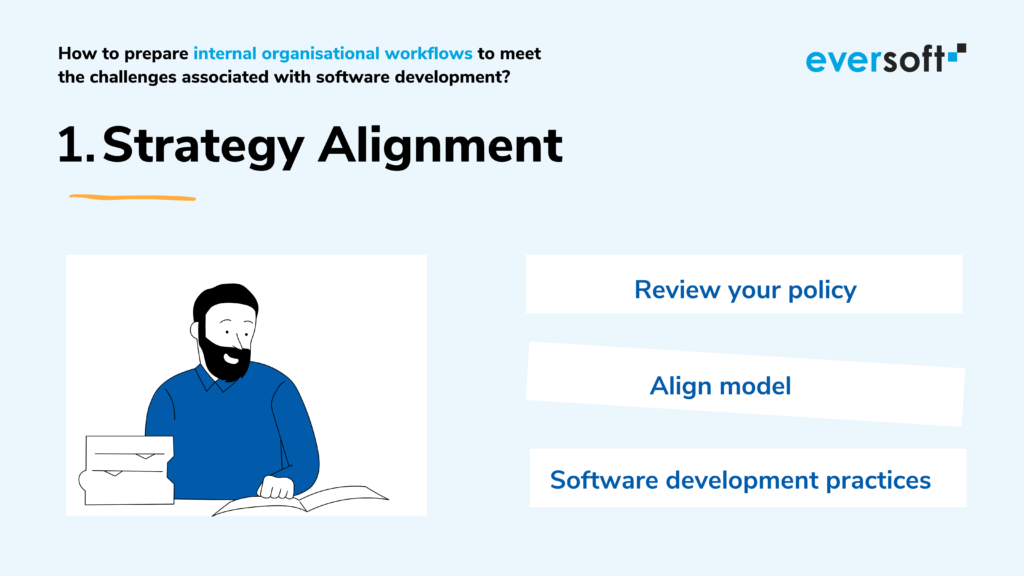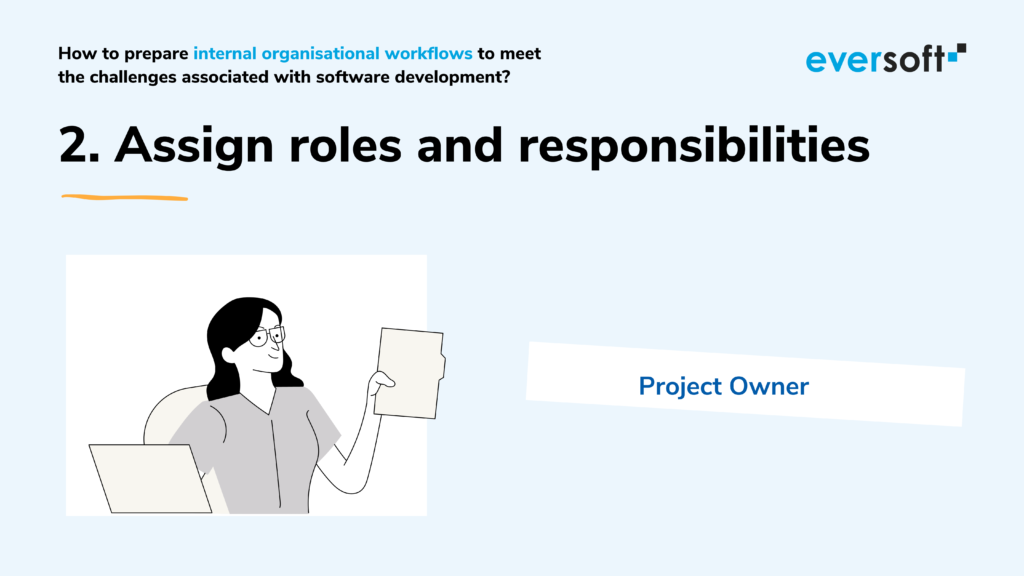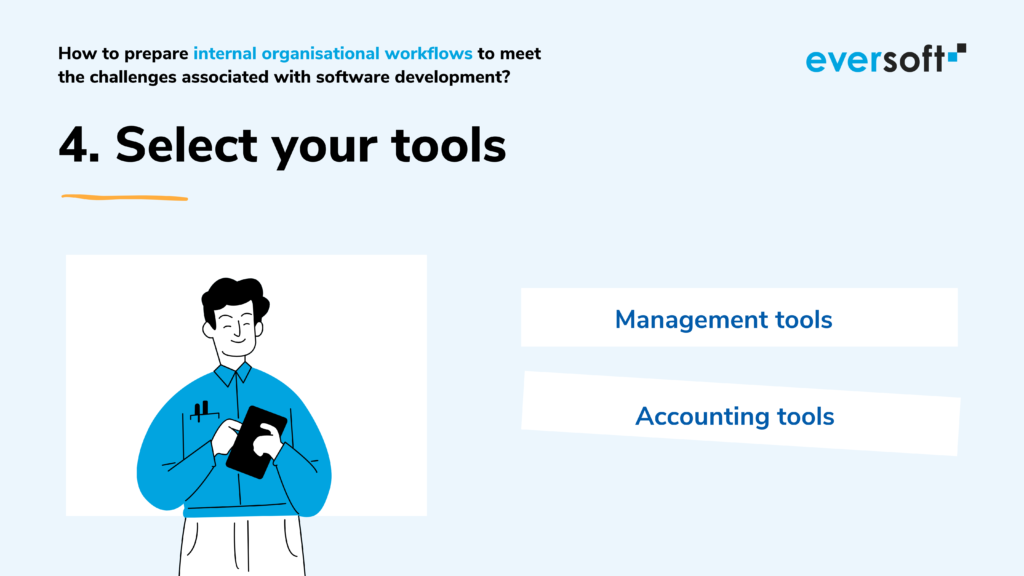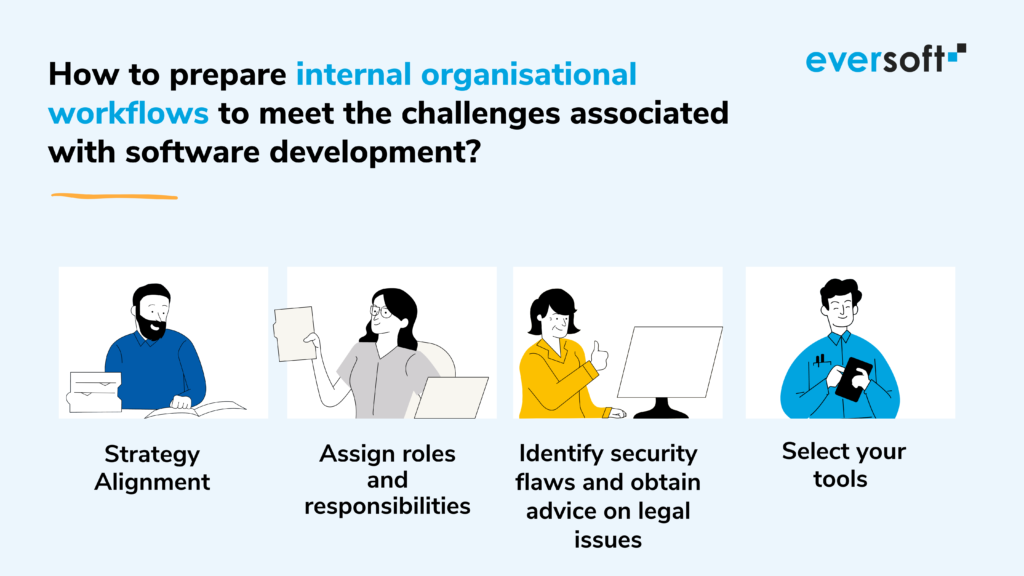How to prepare internal organisational workflows to meet the challenges associated with software development?
Outsourcing can be great for your company, taking some of the weight off your teams’ shoulders, minimising risks of project failure, and shortening time-to-market. But you must remember that cooperation with a third party can fall flat if your company is not prepared internally.
Whether you are about to start hiring external software providers for the first time or want to improve your current cooperation with third party providers, you must start by reviewing your basic outsourcing strategy and defining key business goals first. Otherwise the partnership will fail to deliver on your expectations.
Software development challenges
You can optimise internal organisational workflows to meet the challenges associated with software development outsourcing by:
- Strategy Alignment
- Assign roles and responsibilities
- Identify security flaws and obtain advice on legal issues
- Select your tools

1. Strategy Alignment
Review your policy
To make sure your organisational workflows enable good cooperation with a third party, take some time to consider how to create a strong relationship with your outsourcer. Review your internal policies regarding operations, communication, and knowledge sharing procedures.
Align model
When using staff augmentation or managed team models, mirroring your software development cycle at the providers’ site is essential. However, if you are new to outsourcing, you can always rely on the model proposed by your partner.
Software development practices
Review and formalise all your development procedures, code standards, and other best practices. Do not forget about the importance of proactive knowledge and technology sharing, which requires setting up shared repositories. There you can store all documentation relevant to the project, so both external and internal teams can easily access everything they need.

2. Assign roles
Project Owner
As many examples show, outsourcing can turn into a disaster if you do not assign roles with clear responsibilities, especially when your internal team is going to cooperate with the external one. To ensure that your software development project runs asexpected, regardless of the chosen model of service, assign a Project Owner who will act as a guardian of your interests. The experienced PO will guarantee that software development is not behind schedule, making sure the project reflects your constantly changing needs.

3. Identify security flaws and obtain advice on legal issues
Security
Before the project starts, identify potential vulnerabilities that may lead to a security breach and prepare your infrastructure accordingly. You can limit access to your server or authenticate developers using secured SSL certificates. When the project involves sensitive data belonging to your customers, you may need to encrypt or anonymise information such as credit card information or social security numbers.
Legal issues
You can also prepare a non-disclosure agreement (NDA) for your outsourcing partner. It must cover governing law, protected information, agreement duration, and breach-of-contract consequences. Furthermore, if a project involves personal data processing, do not forget to check it against GDPR requirements.
Be aware of the pros and cons of different types of contracts. Among the most popular are: time and materials, fixed price, flexible scope and pain share/gain share. When it comes to payment terms, define strict deadlines for issuing an invoice and invoice payment. It is also crucial to make sure you have a clear view of licensing, e.g. terms of transferring the copyrights e.t.c

4. Select your tools
Management tools
The only way to ensure fruitful cooperation is to select suitable management tools. They will allow a seamless organisational workflow for both external and internal teams. There are plenty of solutions available; Jira, Trello, Basecamp, and Asana are among the best.
Accounting tools
As for accounting and time tracking, we recommend tools such as Harvest or Toggl. They will allow you to track project progress and check how much time the third party developers spend on their tasks. And by implementing an escalation mechanism that allows outsourced teams to report any issues, will you be able to minimise the time of idling preventing a productivity bottleneck.

Final thoughts on Software Development Challenges
You must be aware that achieving great results through outsourcing requires a great deal of commitment from you and your team before the project starts. Only by reviewing your internal policy regarding your operational capacities, strategy, security, roles, and communication can a partnership achieve expected deliverables. Otherwise, it can turn into a disaster, wasting your time, money, and resources.
Related posts:
- Outsourcing, Nearshoring and Offshoring. What’s the difference?
- Team leasing – a way to access the best specialists and IT teams in the industry
- 4 key steps to efficient Software Development Outsourcing




